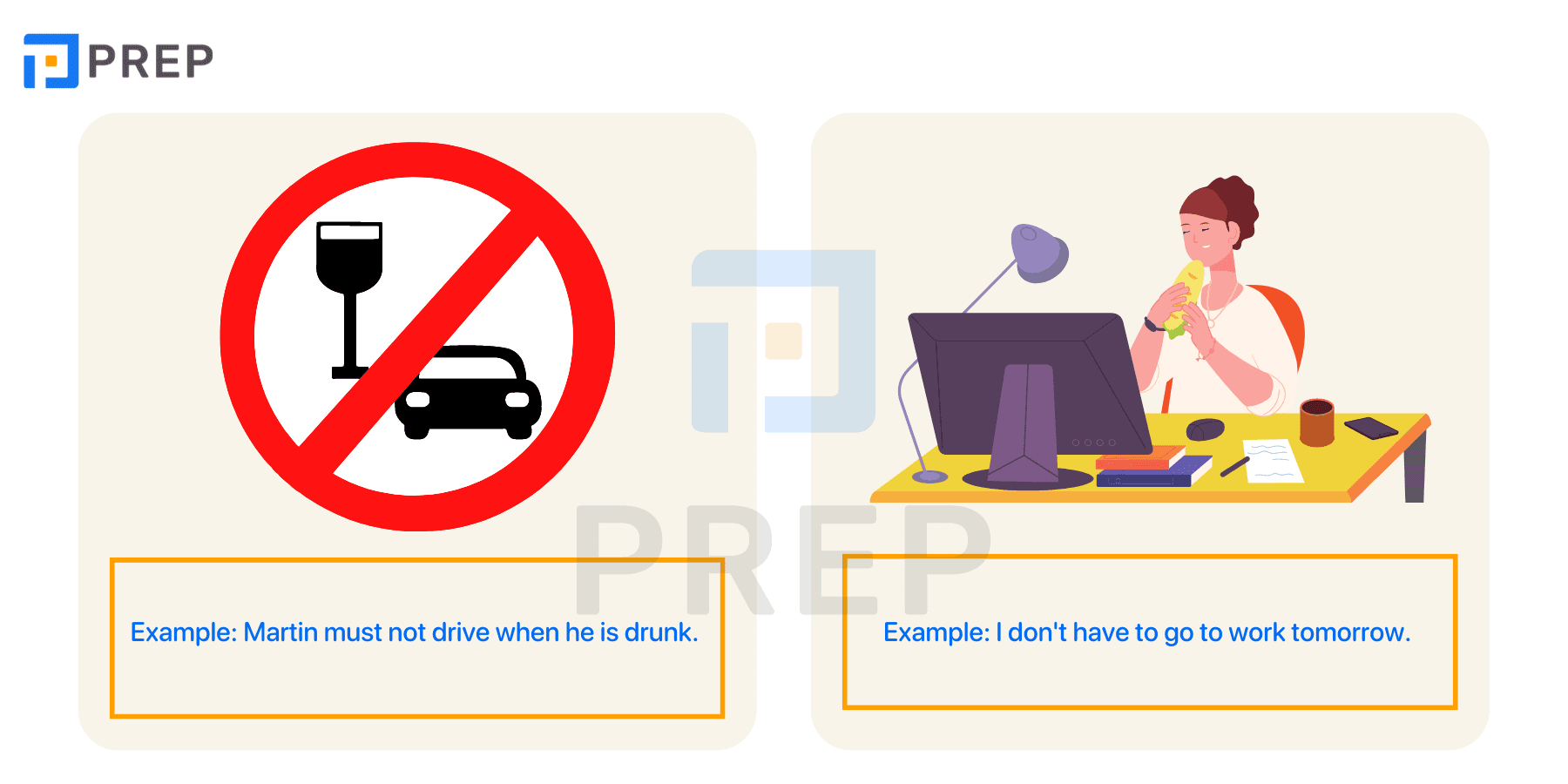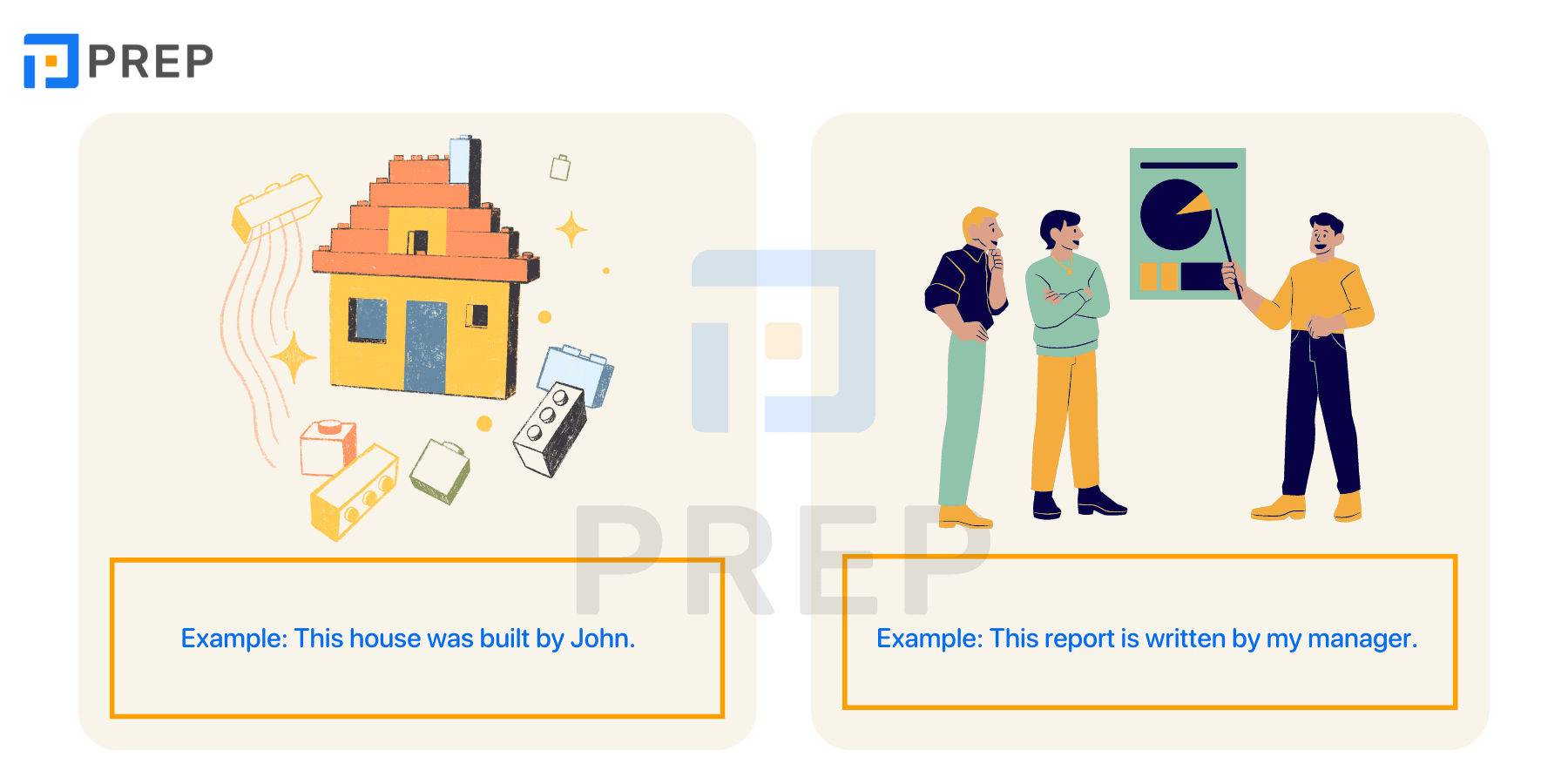Search blog
Passive voice with modal verbs: structure, examples, exercises
Passive voice with modal verbs is a common topic in English. In today's article, PREP will help you understand the detailed knowledge about the structure of Passive voice with modal verbs, along with providing specific examples and exercises.

I. What are modal verbs?
Before delving into the knowledge of Passive voice with modal verbs, let's review the theory of modal verbs in English!
Modal verbs are words used to express ability, certainty, advice, prediction, obligation, etc. Modal verbs follow the "3 NOs" rule:
- No addition of "s/es" after the subject in the third-person singular.
- No addition of "-s", "-ed", "-ing" after the modal verb.
- No addition of auxiliary verbs "don't/doesn't/didn't" in negative sentences.
Note: Only "have to" is used like regular verbs.
For example:
- I can speak English.
- May I use your laptop?
- Martin must not drive when he is drunk.
- I don't have to go to work tomorrow.

II. What is Passive voice?
The passive voice is used when we want to emphasize the object being affected by the action rather than the doer of the action. The tense of the verb in the passive voice must correspond exactly to the tense of the verb in the active voice.
Structure of the passive voice:
S + be + V3/Ved + (by + agent)
For example:
- John built this house ➡ This house was built by John.
- My manager writes this report. ➡ This report is written by my manager.
Note: If the subject in the active voice is: they, people, everyone, someone, anyone, etc. ➡ it is not necessary to include it in the passive voice.
For example: Someone stole the car last night ➡ The car was stolen (by someone) last night.
➡ The phrase "by someone" is not necessary in the passive voice.

III. Structure of Passive voice with modal verbs
After understanding the definition of modal verbs and the passive voice, let's learn the general structure of Passive voice with modal verbs below:
Present: S + model verbs + (not) + be + V3/Ved (Past Participle)
Past: S + model verbs + (not) + have been + V3/Ved (Past Participle)

Specific structures of Passive voice with each type of modal verb are as follows:
Modal verbs | Structure of Passive voice with modal verbs | Example |
Can/Could | Present: S + can/could + (not) + be + V3/Ved Past: S + can/could + (not) + have been + V3/Ved |
|
May/Might | Present: S + may/might + (not) + be + V3/Ved Past: S + may/might + (not) + have been + V3/Ved |
|
Should/ Ought to | Present: S + should/ought to + (not) + be + V3/Ved Past: S + should/ought to + (not) + have been + V3/Ved |
|
Will/ Would | Present: S + will/would + (not) + be + V3/Ved Past: S + will/would + (not) + have been + V3/Ved |
|
Must | Present: S + must + (not) + be + V3/Ved Past: S + must + (not) + have been + V3/Ved |
|
Have to Attention: "have to" is used like a regular verb. | Present:
Past:
|
|
IV. Exercises on Passive voice with modal verbs
To solidify your knowledge of Passive voice with modal verbs, let's practice the following exercises on Passive voice with modal verbs to improve your exam skills:
Exercise: Change the following sentences into Passive voice with modal verbs
1. The government must take action to address the climate crisis.
2. The company may announce the new policy soon.
3. The doctor will perform surgery on this patient next month.
4. Sarah should explain the homework to the students.
5. The company will send out a new product announcement next week.
6. The students must complete their assignments by the end of the week.
7. He may not have finished the project yet.
8. Jenny should clean her room every day.
9. You have to sign the document before leaving.
10. Martin will announce the winner tomorrow.
Answer:
1. Action must be taken by the government to address the climate crisis.
2. The policy may be announced by the company soon.
3. Surgery will be performed on this patient by the doctor next month.
4. The homework should be explained to the students by Sarah.
5. A new product announcement will be sent out next week by the company.
6. The assignments must be completed by the students by the end of the week.
7. The project may not have been finished by him yet.
8. The room should be cleaned by Jenny every day.
9. The document has to be signed by you before leaving.
10. The winner will be announced by Martin tomorrow.
Now you have a good understanding of Passive voice with modal verbs, right? In this article, PREP has compiled a detailed theory about Passive voice with modal verbs along with specific examples and exercises. Let’s save it for regular review!

Comment
Search blog
Đăng ký tư vấn lộ trình học
Bạn hãy để lại thông tin, Prep sẽ liên hệ tư vấn cho mình ngay nha!
